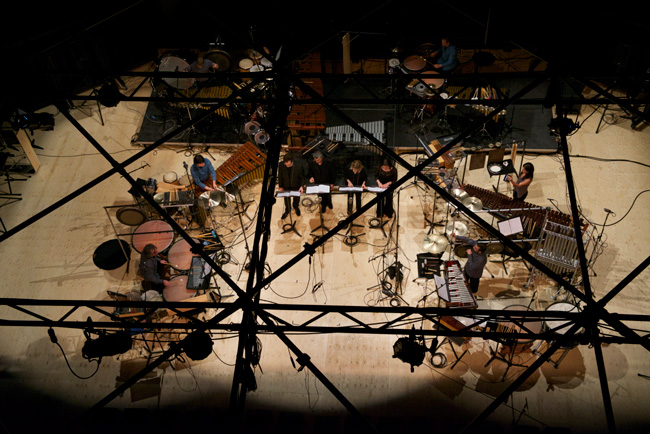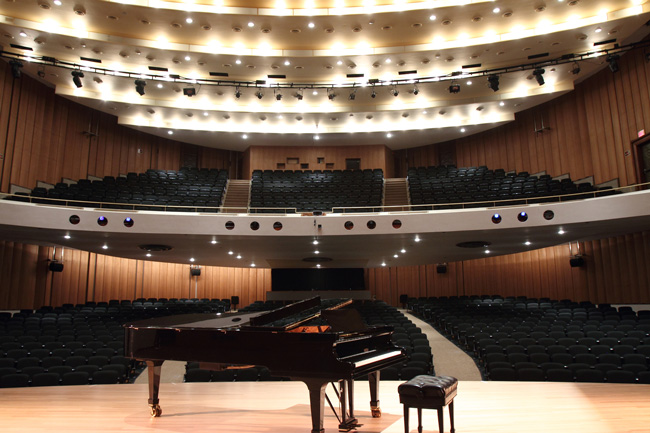
By Lev Bratishenko
The Centre for Interdisciplinary Research in Music Media and Technology (CIRMMT), established by McGill, Université de Montréal and Université de Sherbrooke in 2000, is known for its virtual acoustics work. Some Montreal concertgoers will recall their rare and memorable concerts where the room’s acoustics change at the push of a button. But CIRMMT’s many projects also include research on engineering, information technology, the science of music performance and expanded musical practice.
For example, while a master’s and doctoral student in music technology at McGill, Avrum Hollinger invented musical instruments that could be safely played inside Magnetic Resonance Imaging scanners without disrupting their operation. Observing musicians playing Hollinger’s keyboards and cello inside the MRI revealed new insights into the relationships between music and the brain, with implications that go beyond music to our understanding of brain structure and function. Hollinger’s work was supervised by McGill William Dawson Scholar and professor in music technology Marcelo Wanderley, director of CIRMMT from 2011 to 2014, with colleagues from Concordia University and the Montreal Neurological Institute.
CIRMMT’s projects also investigate hearing and noise, including work on sound-cancelling and augmented hearing technology, interactive environments for music performance, as well as new kinds of distance training programs based on distributed teaching and telepresence.

CIRMMT was recently awarded a major grant to renovate and connect two spaces: the Music Multimedia Room (MMR) in the basement of the Elizabeth Wirth Music Building at McGill’s Schulich School of Music and Université de Montréal’s concert hall, Salle Claude-Champagne. Funding is provided by the Canada Foundation for Innovation, the Quebec government and the Fonds de recherche du Québec, as well as from private partners.
“This exceptionally large grant, together with several smaller grants and other contributions, have brought 14.5 million dollars in research and infrastructure funds to CIRMMT since 2011. Such an amount is unheard of for research centres in music or the social sciences,” explains Wanderley, the principal investigator in the project.
The grant is part of public and private investments totalling $17 million awarded to CIRMMT and the Schulich School of Music recently and celebrated at an event held on June 2.
Connecting two exceptional spaces
The four-storey MMR – a cinderblock “black box” room – has been used as a laboratory for CIRMMT and a favourite recording studio for orchestra-size ensembles since the building opened in 2005. It was designed and constructed as a kind of acoustic wildlife reserve, a building protected within a building, and the new funding will finally allow it to operate at full potential, as a world-class laboratory-performance space.
The renovations, expected to last nine months, include installing a new floor, newly designed moveable acoustical treatments on the walls and virtual acoustic systems for flexible acoustic performance in a variety of experiments, as well as a hanging grid that will cover the whole ceiling, letting researchers mount video and motion-capture cameras, microphone arrays and speakers anywhere in the space.
For the Université de Montréal, the project will allow Salle Claude-Champagne (SCC), already a beloved performance space, to be used also as a laboratory. The SCC can currently hold a full orchestra and a thousand spectators. As part of this project, infrastructure for data collection and equipment for sophisticated environmental control will be added.
Université de Montréal professor Caroline Traube explains that the new equipment will let researchers capture a variety of data simultaneously. This equipment includes cameras that will capture the performers’ movements from different angles, as well as high-quality microphones. A control room will be added to the back of the hall, where it will function as a recording studio; researchers will also be able to hear and analyse the music performed in the hall from a new adjacent lab.
With all of this in place, the SCC and MMR will be connected into a half digital and half physical space with new kinds of experimental possibilities. For example: two groups of participants could experience the same performance, one at McGill and the other at UdeM, while both audience and performers are tracked by networks of sensors. Experimenters could even introduce subtle differences into the digital experience and study the effects in comparison to the control group in the hall.
“The unique aspect of this project is that all these components are united,” Traube explains. “I don’t know another research centre that would study musical gesture and telepresence and immersive systems for large ensembles in an integrated way.”
The new infrastructure will make it easier to experiment with distributed performance where artists in different, sometimes distant, locations perform together. CIRMMT already pioneered work in this area with the Open Orchestra project, which combined live, recorded and virtual players in a new kind of ensemble.
“This grant takes us to a new level in fostering interdisciplinarity” says Schulich professor and current CIRMMT director Isabelle Cossette, a flautist and an expert on respiration and scientifically-based instrumental pedagogy. “It’s a unique opportunity to understand, through collaborative work with performers, composers, educators and scientists, how we compose, make and perceive music.”
